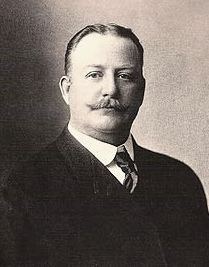

We've been considering quite a few different cultural productions inspired by poker during its early history, including stories (true and fictional), songs, articles, and early films. A lot of these creative responses to America's hottest card game weren't only inspired by it, however the hottest of them would in turn help shape opinions regarding poker going forward.
Another example worth including as we continue our transition from the 19th to the 20 th centuries is the numerous contribution of the yankee artist Frederic Remington whose paintings, illustrations, and sculptures of the Old West would help shape how that era would end up remembered.
Remington exerted direct influence not just on how the Old West "looked" to his own and future generations, but what it "meant" as well, together with his imagery and depictions of the yankee cowboy inspiring early Western films and contributing to an Old West mythology that continues to have its effect today.
Among Remington's works were a few especially popular ones depicting card playing in that Old West context, and those, too, would have their influence when it came to poker's reputation and place within the culture.
The Rise of Remington
Remington was born in Ny in 1861 firstly of the Civil War. His father was a Union colonel, and young Remington could be similarly nurtured early on for an army career himself. However a talent for drawing would carry him down a distinct path that included a brief stint at art school at Yale University through the late 1870s.
 Frederic Remington
Frederic Remington
As a tender adult Remington was in a position to to travel west and spot the various landscapes and scenes he'd spend his later life reproducing, getting concerned early on with the preferred Harper's Weekly where his first drawings were published. More schooling back in Ny followed, and by the age of 25 he'd scored his first Harper's Weekly cover, a sketch of a scout tracking Geronimo amid the decades-long Apache Wars.
Other early highlights for Remington included being recruited for instance future president Theodore Roosevelt's 1887 book Ranch Life and the Hunting Trail, then doing more traveling out west and witnessing first-hand the aftermath of the 1890 massacre at Wounded Knee from which he'd produce numerous paintings and illustrations.
A one-man show on the American Art Galleries furthered his fame, and by the tip of the century Remington had become probably the most country's best known artists, even having a few his paintings appear on postage stamps. Originally of the brand new century, he'd reunite with Roosevelt while serving as a war correspondent and illustrator for the brand new York Journal through the Spanish-American War.
During the years preceding his premature death from complications with appendicitis in 1909, Remington wrote novels, sculpted, and continued to color and sketch despite the recognition of his naturalistic style beginning to wane as more impressionistic artists started to enjoy greater notice.
Filling in Details of the Mythic Cowboy
Remington's legacy was particularly felt when it came to later depictions of the yank cowboy within the Old West by other artists in addition to in fiction, movies, plays, and later television shows. One series of his titled The Evolution of the Cowpuncher (1893) had special influence, a collaboration with the fiction writer Owen Wister best known for his 1902 book The Virginian often pointed to because the first ever "Western novel" (about which we'll have more to mention later).
From these images and stories steps the mythic cowboy, based in fact though embellished in various ways when made into the central protagonist of later fictions. He's a figure who's manly, tough, athletic, and possessed with an understanding of the significance of labor and the way to outlive. Such self-sufficiency mirrors the fiercely independent spirit of the nation itself, for which in lots of of those stories he's made to face as an emblem.
Also — think John Wayne if it helps — he has a way of justice, will also be hospitable and/or serving of the reason for justice, is filled with gravitas and takes a no-nonsense technique to most issues, and is able to violence when needed. Meanwhile in such narratives are Indians made to function the "other," with other ideas — including the relative status of fellows and ladies and "gender roles" — firmly established and reinforced as well.
Poker playing becomes a part of the mythic cowboy's character, too, adding a component of intelligence and acumen to the portrait. In Cowboys Full, James McManus notes how "mastery of poker and of guns were widely viewed as twin gauges of masculine know-how."
Interestingly, when Remington's famous illustrations of Old West poker games, the cowboy's violent side is front-and-center, with two works specifically depicting the "before" and "after" of card-playing conflicts.
A Quarrel Over Cards (1887)
Remington's woodblock print titled A Quarrel Over Cards — A Sketch from a brand new Mexican Ranch first appeared within the April 23, 1887 issue of Harper's Weekly.
 A Quarrel Over Cards -- A Sketch from a brand new Mexican Ranch (1887), Frederic Remington
A Quarrel Over Cards -- A Sketch from a brand new Mexican Ranch (1887), Frederic Remington
Though darkly-lit, the scene is a vivid one, showing seven men gathered around a crowded table covered by chips and cards. The only standing points aggressively, his finger directed toward another seated and holding a deck of cards. The suggestion is obvious — the accuser has detected an issue with the dealing, while the accused responds defensively, his open palm conveying innocence.
Others look on with concern, with a servant on the stove holding a hand upwards as though in anticipation of the argument taking a more threatening turn. Meanwhile the player nearest to us within the foreground — whom we perhaps only notice later — studies the scene carefully, one hand rubbing his cheek and the opposite firmly grasping the pistol in his holster.
And oh, look — the person standing — his hand is on his gun as well.
The accompanying text in Harper's describes the scene even further, explaining how the person at the dealer's right is his confederate. "It was his deal before, after which the trick was done," that is, the stacking of the deck. We're also directed to note the player at the dealer's left who's hastily covering his chips, having "a shrewd suspicion that during the 'muss' the table may well be overturned."
The description insists the scene is typical, and characterizes all poker games of the day as both crooked and at risk of violence. A game of "draw-poker," we're told, is rife with cheating, either by a dealer acting in concert with another player or cards being saved from the deck and produced thereafter. "A hidden card produced on the exact nick of time, makes 'four of a kind,' and the pot is raked in," goes the explanation.
But occasionally players are wise to such deceit. "Sometimes," we're told, "there comes a player who... knows the entire ways which might be crooked. It even adds to his zest to play not just against the luck of the cards, however the talents of the gamblers." Gunplay is therefore to be expected — "there can be little excitement concerning the game without drawing of cards and revolvers."
In other words, the author concludes, "Mr. F. Remington has made a standard gambling scene." Readers who've never seen one of these game are assured the image "is something that occurs somewhere or other each day within the Territories."
A Misdeal (1897)
A decade later Remington produced a painting titled A Misdeal, capturing in oil on canvas what might be read as a type of sequel to the sooner work.
 A Misdeal (1897), Frederic Remington
A Misdeal (1897), Frederic Remington
Less must be said regarding this scene, through which the phrase "four of a sort" unfortunately might be used to consult the dead or wounded — three at the floor, one at his seat. Because the bartender and people outside the saloon cower, the aggrieved party appears within the strategy of collecting the session's final pot.
Though perhaps again meant to provide a normal gambling scene, the painting wasn't that typical for Remington who more often thinking about outdoor settings and didn't necessarily highlight frontier violence, even if illustrating probably the most battles he'd witnessed. In any event, as with A Quarrel Over Cards, the painting helped establish the impression of poker being a deadly game, furthering the association of such carnage with card playing.
Proving Remington's influence on later filmmakers, probably the most great Western director John Ford's early silent films, Hell Bent (1918), opens with a personality and admiring A Misdeal. Then later does the film move into depicting violence very similar to that captured within the painting.
As we've already begun to note, the turn of the century saw poker find its way into other, less dangerous contexts equivalent to clubs and personal homes, where the standard" gambling scene" often wouldn't include such deadly disagreements.
Next week we'll have a look at the work of another American painter — considered one of Remington's contemporaries — presenting a lot more playful quarrels over cards. Hint: the players play hands with paws.
From the forthcoming "Poker & Popular culture: Telling the tale of America’s Favorite Card Game." Martin Harris teaches a course in "Poker in American Film and Culture" within the American Studies program at UNC-Charlotte.
Be certain to complete your PokerNews experience by trying out an outline of our mobile and tablet apps here. Stay on top of the poker world out of your phone with our mobile iOS and Android app, or fan the flames of our iPad app in your tablet. You may also update your individual chip counts from poker tournaments all over the world with MyStack on both Android and iOS.
PokerNews.com is the world's leading poker website. Among other things, visitors will discover a daily dose of articles with the newest poker news, live reporting from tournaments, exclusive videos, podcasts and such a lot more.
PokerStars is the biggest online poker room offering the largest amount of poker games and different game variations including Texas Hold'em, Omaha and other popular poker games. By joining PokerStars you'll easily learn all of the poker rules and poker strategy by playing free poker games. Join PokerStars and luxuriate in high quality online poker.

Read More... [Source: PokerNews]
No comments:
Post a Comment